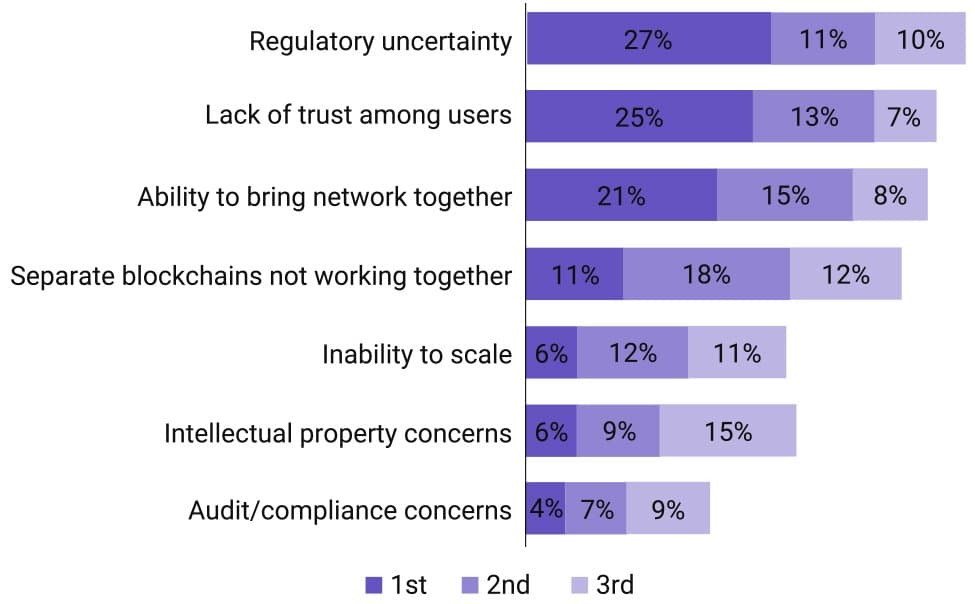Blockchain and distributed ledger technology is an area for exploration inside and outside of traditional financial institutions for the last few years. The potential applicability of blockchain to facilitate business is very broad, which is why it gets so much attention. It is implemented by governments (e.g. Italy, Thailand, United States of America, Croatia, Middle East) and private companies (e.g. Amazon, IBM, Allianz and UPS)1.
But there are some significant barriers while moving from experimentation to implementation (see Fig. 1). According to PWC2 survey, these are primarily:
- regulatory uncertainty (48%)
- lack of trust among users (45%)
- ability to bring the network together (44%)

Figure 1 Biggest barriers to blockchain adoption3
First and most important are legal issues. There are uncertainties in term of what’s legitimate in the blockchain world. What are the rules for investment? How do you legitimize a transaction? Just because two parties agree that a transaction occurs doesn’t mean that it satisfies security or legal requirements.
The second problem is related to trust.
Building trust between users and online services takes work as well as time. As a technology, blockchain offers inherent features such as decentralization that promotes trust and transparency. However, depending on the implementation, decentralization may not be enough to guarantee a fair and equitable relationship among stakeholders4.
The third barrier impacts the way that the whole blockchain ecosystem is built. It requires an agreement between all stakeholders on a set of standards that will define the business model. The network participants have to decide the rules for participation, analyze potential risks, decide on the consensus mechanism, etc.
The question is, does blockchain offer sufficient advantage to break through those obstacles?
Blockchain’s path to adoption is probably somewhat unpredictable—like the Internet in the early ’90s. Who could have predicted that we would have gone from applications like email to something like Amazon Web Services, or Apple platforms, or Facebook? Fundamental technologies—including blockchain—grow slowly. It may take a decade—or two decades—for blockchain to evolve in a way that has wide application5.










